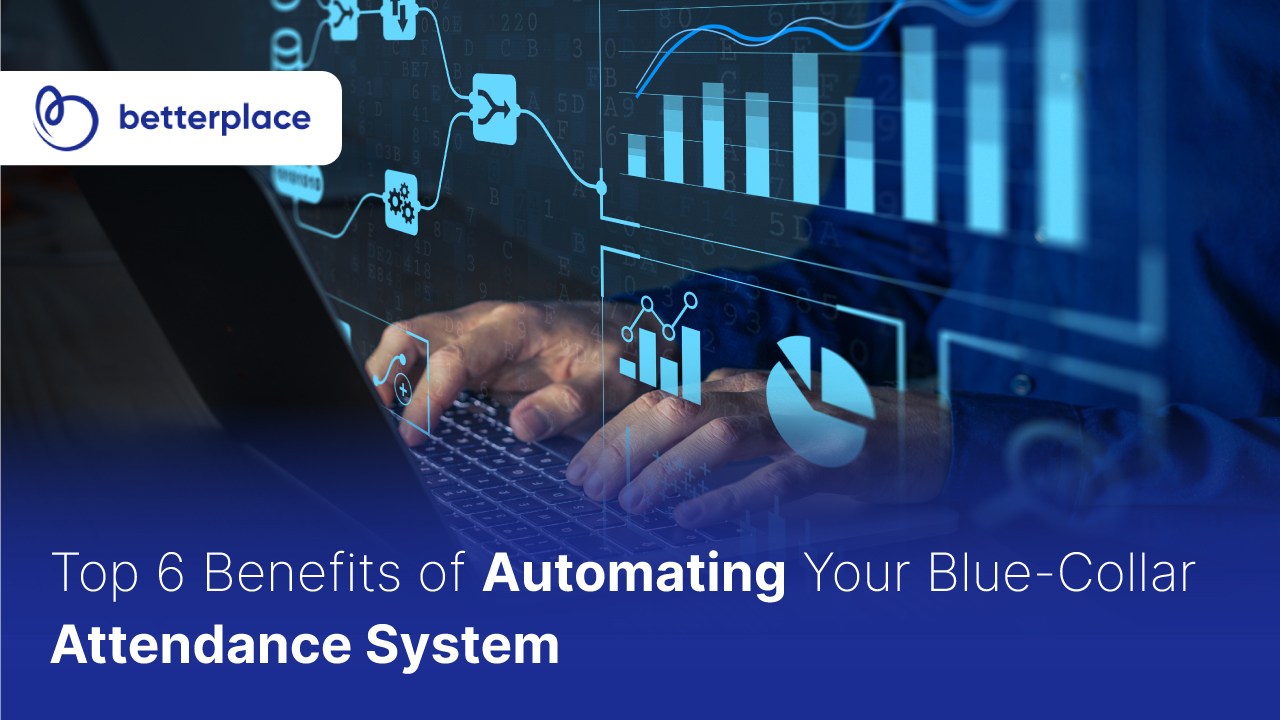Top 6 Benefits of Automating Your Blue-Collar Attendance System
Indian companies are strongly embracing digital transformation, representing the highest numbers among all countries in the Asia-Pacific. In a recent survey, 52% of companies revealed that they have adopted of new and digital ways of running their business. Among various forces expected to impact the workplaces in the Indian corporate landscape by 2023, 44% said automation would be one of the most crucial.
Process automation has become a linchpin for digital transformation in companies. It is driving efficiency, productivity, and transforming workplace wellness. It is time to extend these benefits for the blue-collar workforce as well.
For a long time, companies have faced immense challenges in attendance tracking and shift-scheduling of a distributed workforce. Supervisors waste quality time in shift scheduling and then dealing with absenteeism and urgent developments. Decades-old, archaic processes lead to miscommunication and manual errors, ultimately leading to many problems, most notably incorrect wage calculation.
Employee attrition levels in the blue-collar segment have remained sky-high due to such factors and more. Here’s how an automated attendance system can make their life and the life of their employers easier.
1. Saving Time and Resources
When HR or supervisors are managing thousands of workers across different regions, hubs, locations, and positions, scheduling shifts at scale is a huge challenge. A lot of data needs to be entered, collated and preserved, leading to a high utilisation of resources and risk for errors.
With an automated system, they can now use their precious time to oversee other important activities, rather than planning shifts, marking attendance, or dealing with unexpected worker absence.


Configurable attendance systems, with intuitive UIs for individual sites, can enable seamless shift planning, overtime control, weekly leaves, and more, as per the specific needs of the ecosystem. For instance, auto-rostering means supervisors get suggestions that specific workers are available for night shifts, or that some are not available, having completed 8-10 hours of work.
Group attendance marking makes the process simpler, while technologies like geo-fencing and facial recognition make it possible for workers to self-mark attendance while improving transparency. They can go to a designated site, capture themselves on the app, enabling lead management regularisation. From there on, the complete workflow is taken care of.
Further, the system can easily import previous rosters, which not only saves time but also preserves valuable data. Automatic generation of payroll reports, muster roll, and attendance roll means managers no longer need to spend a month in reconciliation, across several locations and regions. This improves the accuracy and timeline for salary disbursal.
2. Ensuring Compliance
A platform that has embedded compliance with state and central government laws will help employers manage region-specific holidays. It will also help the organisation comply with different industry-specific laws, and company-specific policies related to workers’ overtime, compensatory, and weekly off. Non-compliance with state laws can lead to hefty fines and even lawsuits. A compliant system is the first step towards reducing workplace exploitation.
3. Flexible Custom Analytics
When companies automate attendance and shift scheduling, they gain access to valuable customised reports for data-driven decisions. For instance, real-time analytics provide attendance insights for multiple locations on a single dashboard. This can then provide decision-makers information about chronic absenteeism, loss of productivity, and other aspects. Companies can then address these problems, improve resource planning and fine-tune company policies for maximum productivity and optimal resource utilisation. The system can allow setting up of daily auto-email alerts to managers with real-time data for timely decisions, which can help minimise employee attrition and churn.
4. Accurate Wage Calculation
With readily available plug-and-play APIs, attendance systems can be integrated with anything, including payroll systems. With accurate attendance data, companies can effectively prepare salary and compliance reports. They can send salaries to employee accounts directly, with UTR confirmations. This includes accurate overtime pay, along with PF deductions.
This is a huge step up from siloed systems and separate spreadsheets, which result in errors in data reporting, schedule miscommunications, ultimately resulting to inaccurate payroll reporting.
5. Effective Communication Channels
When managers or supervisors use disparate channels to plan shifts, record data and notify workers, it leads to efficient communication. Among the commonplace practises seen today, shifts are planned on excel spreadsheets, and then distributed in the form of printed copies or pasted in a common place, where workers can see them. This can lead to workers missing out on important schedule updates, which can lead to no-shows.
In an automated system, several moving parts of the system are integrated into one single platform. Workers can easily access information, on their own mobile phone, wherever they are. For workers operating in remote areas of the country, the system can support offline attendance mode so that data remains updated and accurate at all times.
6. Improved Job Satisfaction and Employee Morale
In the end, accurate and timely disbursement of payments, contactless attendance technologies, easy and seamless access to schedules, and more, all lead to satisfied employees. It boosts their morale and increases productivity.
For too long, blue-collar workers have dealt with inefficient workplace practises that fail to address their pain points. An automated attendance system at the basic level provides the data necessary for companies to extend various benefits, based on performances.
Subscribe For Newsletter
Subscribe to get the latest news and happenings around recruitment space


 (1 votes, average: 4.00 out of 5)
(1 votes, average: 4.00 out of 5)